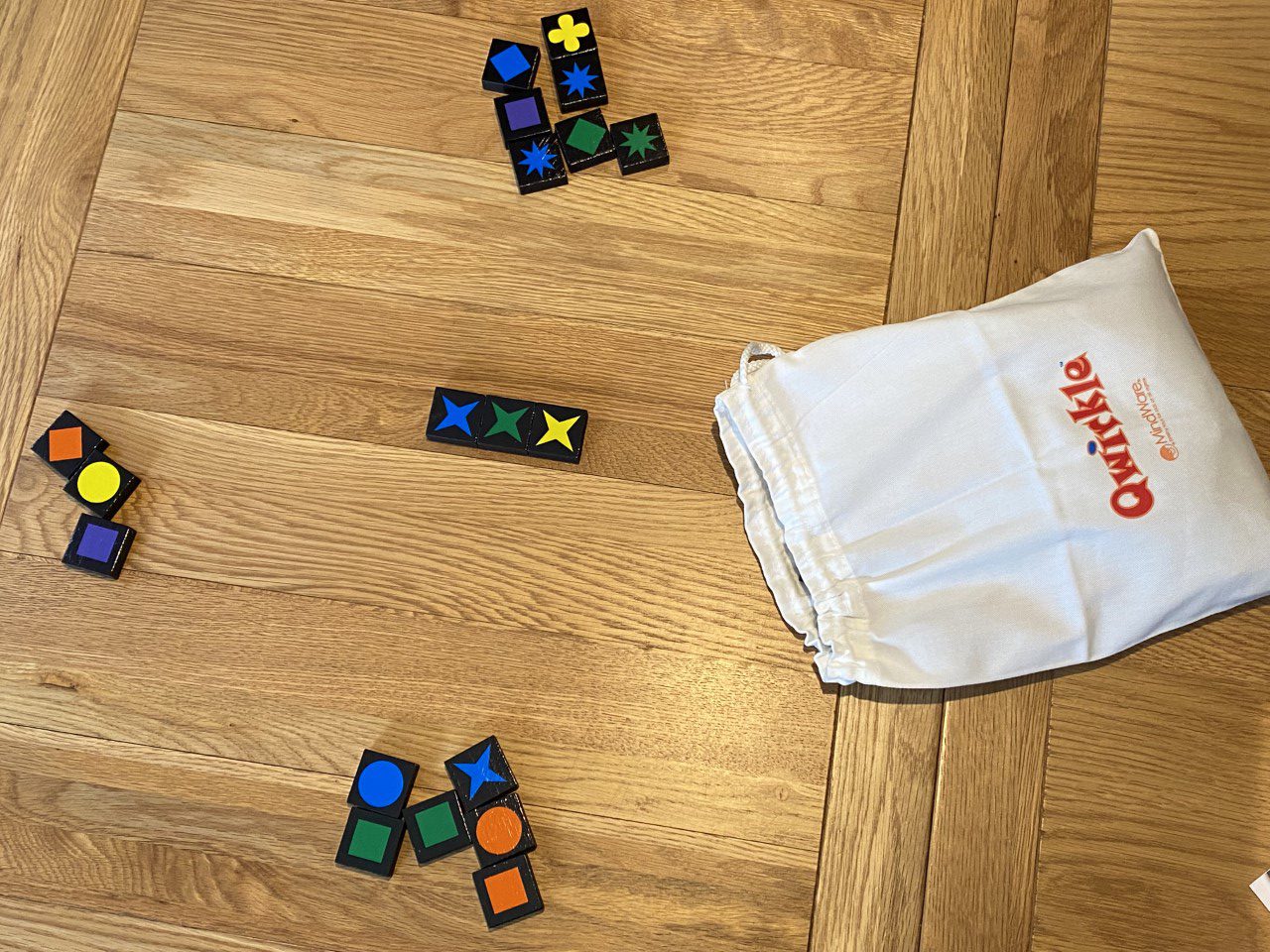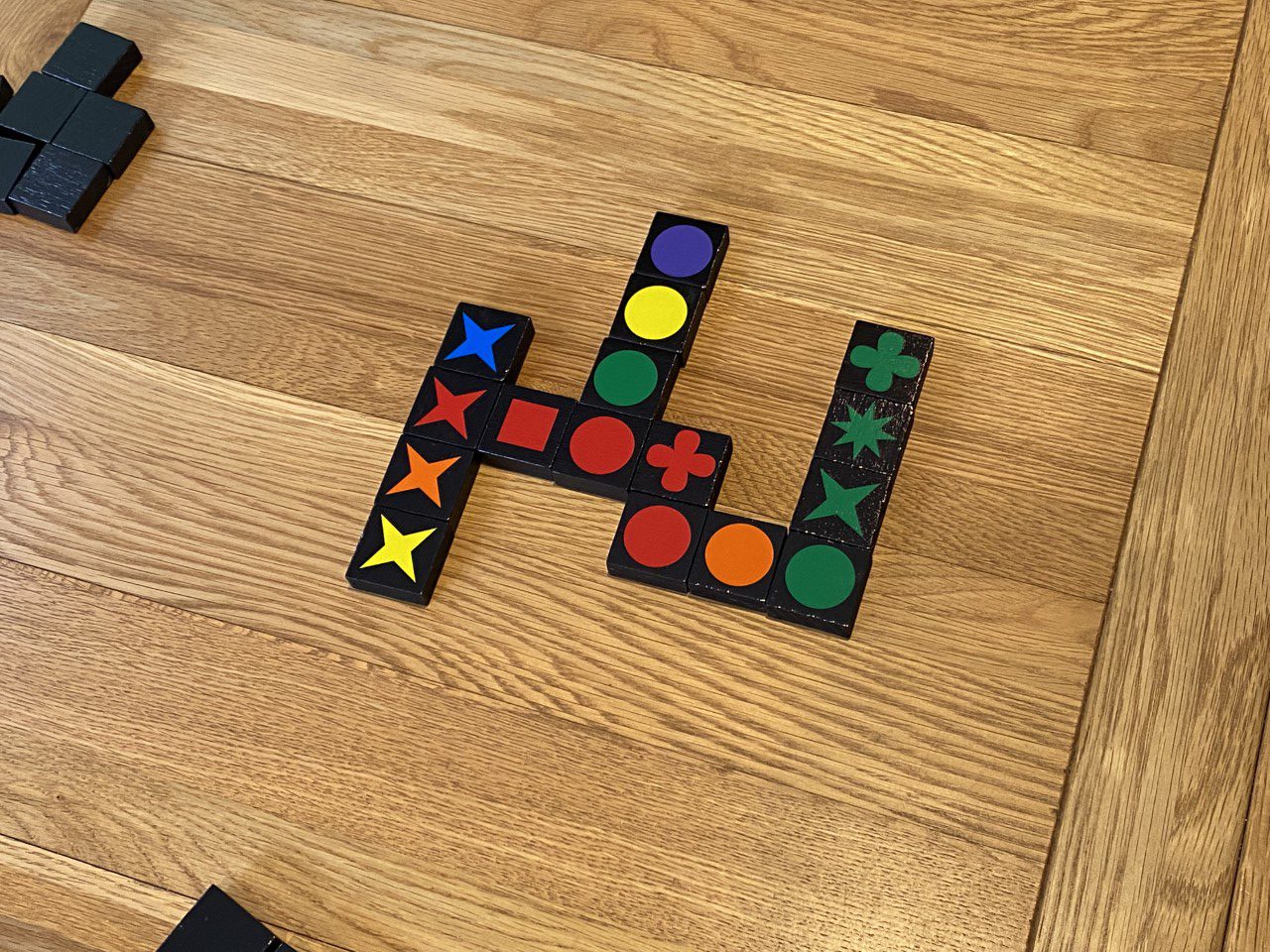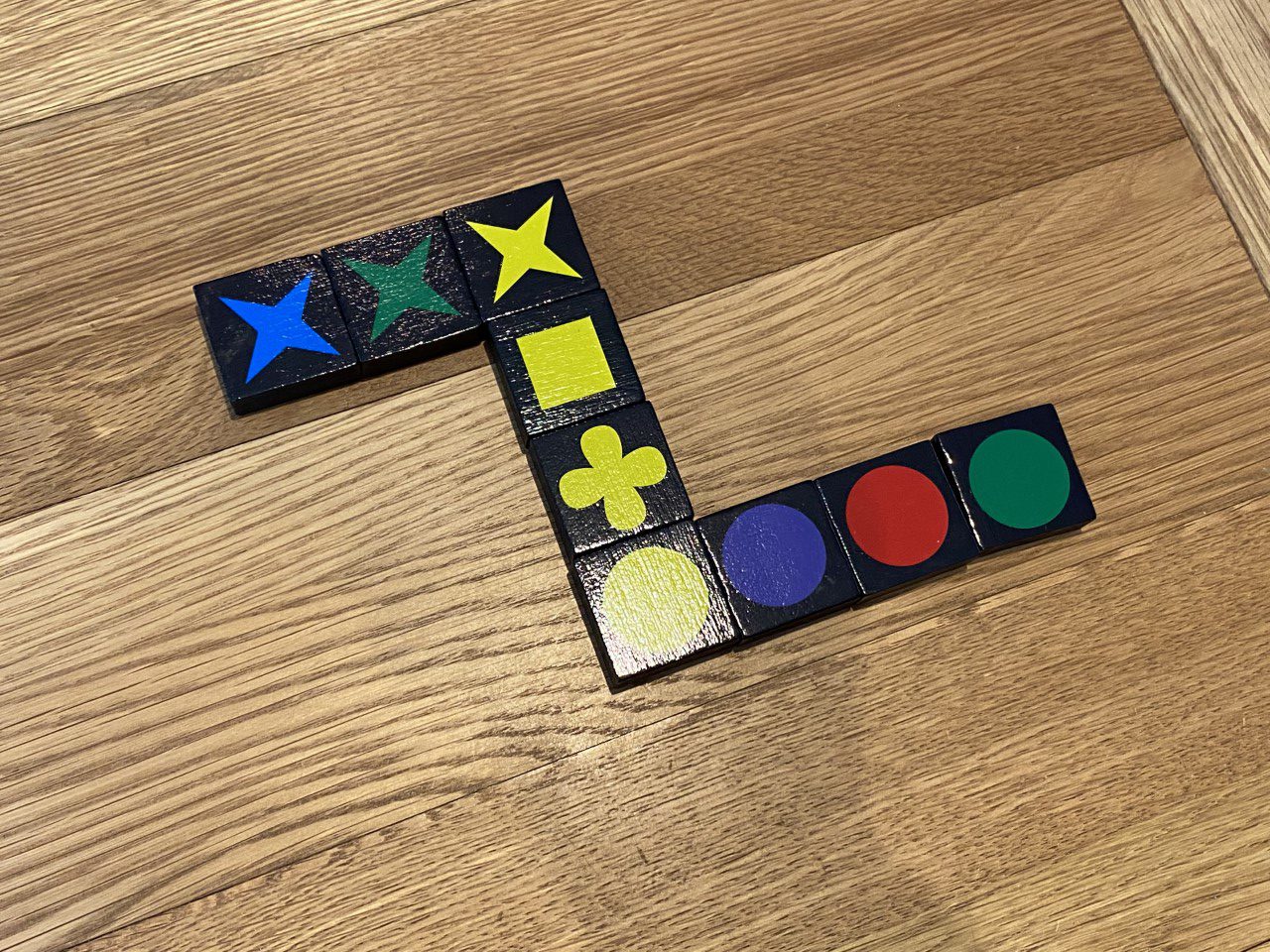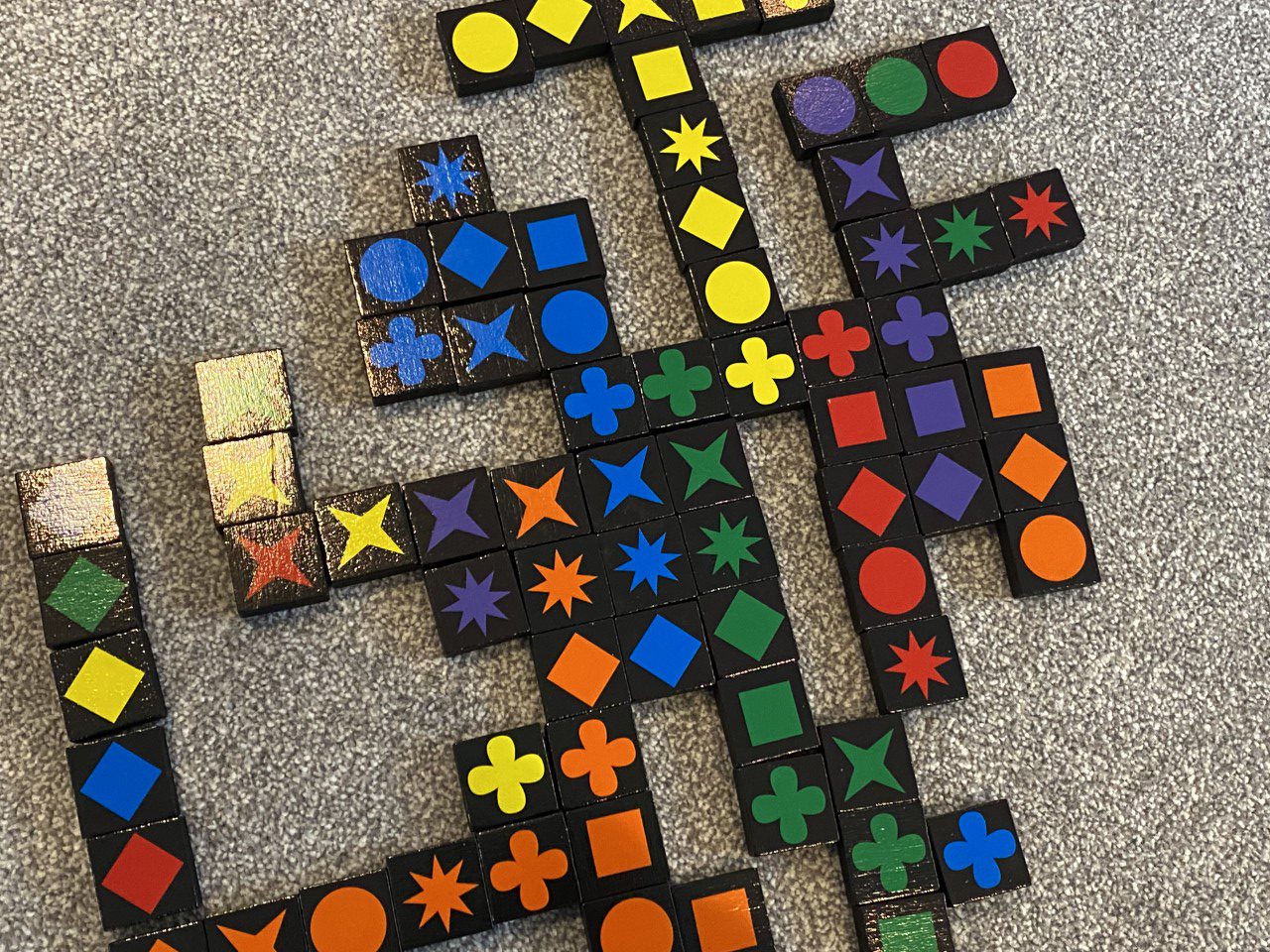Qwirkle is a shape and colour matching alternative to Scrabble, and it’s a lot more fun!
When it comes to family games, most people know and reach for the classics — those games like Monopoly or Scrabble that almost anyone over the age of twenty will know well enough to play without being taught. However, without getting into a slanging match, those games all have their weaknesses, and something like Qwirkle might just offer an equally accessible, abstract experience without any of the arguments that come with those classics.
Qwirkle consists of nothing but a bag, a brief instruction booklet and 108 wooden tiles which go into the bag. During setup, the players each draw six tiles and place them upright in front of them (to keep them secret). Tiles are printed with six different patterns and in six different colours, with three tiles showing each pattern of each colour (three blue stars, three yellow circles, etc).

The player who declares the highest opening move (a run of either identical coloured pieces with no matching symbols, or a run of different coloured but matching symbols) will start the game. For example, this might be three different yellow symbols, or a run of three circles made up of any three different colours. That player will then score one point for each tile placed and draw themselves back up to six tiles.
On each turn that follows, the players will place one or more tiles adjacent to those existing, or they will return a number of tiles to the bag and draw the same number back out again. The stipulation when placing a tile is the same as I’ve just described above — no horizontal or vertical line may contain more than one symbol of each colour, and so the maximum length of a line will be six — either six of the same symbol but in different colours, or six tiles of the same colour, all with different symbols.

Players can place tiles in a straight line including before and after a break — which is quite different to Scrabble and does take some time to get your head around. What I mean by this is that let’s say there is already a yellow square on the table — it would be possible (for whatever reason) to place a yellow circle before it and a yellow star after it. You would typically do this to activate additional rows, and thus you would be able to score all rows that were added to. Each tile placed is worth one point, so if you add one in a corner that extends both a horizontal and a vertical row from two tiles to three, you would score three points for each extended row. Phew.
Finally, if you ever complete a row of six tiles (either colours or shapes) then you will score the six points for doing so as normal, plus an additional six points — which is called a Qwirkle. Whilst Qwirkle is almost entirely tactical in terms of the moment to moment decisions and gameplay, not giving away Qwirkle opportunities to your opponent(s) is a major strategic factor, and certainly something which you’ll learn to avoid as you play the game more.

I played a lot of Qwirkle in preparation for this review with my six and eight year old daughters, and both seemed to grasp the game well. We all — me included — did have some issues just remembering the tile placement rules and on occasion during our early games, we ended up with lines that had two symbols of the same colour in them that we hadn’t noticed at the time. We also found that one colourblind player we played with simply couldn’t tell the orange, red and green pieces apart and therefore the game was a complete dud for them.
I think the first issue I describe above was perhaps unique to our group — perhaps because I was constantly watching and assisting my young family, I didn’t notice the poor placement. But that said, you can tell from the way I have described the game above that Qwirkle, whilst theoretically simple, does just take a bit of mental manipulation to completely grasp. The kids, having now played Qwirkle many times, seem to have grasped this better than I have — so this may be a brain-style thing that only affects me.

With those small negatives out of the way, Qwirkle offers a fantastic alternative to the likes of Scrabble, in particular, which is similar in gameplay and length. I consider Scrabble to be a game of luck multiplied by vocabulary — and as a result it can be incredibly frustrating for some and downright unfair for others. I have dyslexic friends for whom playing Scrabble is simply punishment — and Qwirkle is a great alternative. This is also true for younger players, and as I mentioned above, I’ve played Qwirkle numerous times with children as young as six.
The Qwirkle tiles are really nice and chunky, and similarities in colour aside, look fantastic when laid out on the table. There’s no board, but the tiles sit nicely next to each other and have the weight and size to stay more or less where they are placed. The bag is large enough to hold the tiles and feels well made, though I do think it’s a shame that the standard edition of the game leaves out either tile stands or a scoresheet — leaving players needing to supply a pen and paper in order to play the game.

As a player who generally enjoys thematic games and struggles with abstract efforts, I was pleasantly surprised by Qwirkle. It’s a clever, understated game that offers a lot of decisions with each turn, but remains accessible to a very broad range of people. Yes, it presents issues for colour blind players which is a shame, but any game that you can play with both your grandma and your children at the same time with everyone having a fun and relatively level playing field is worth taking a look at.
You can find Qwirkle on Amazon.
Comments are closed.